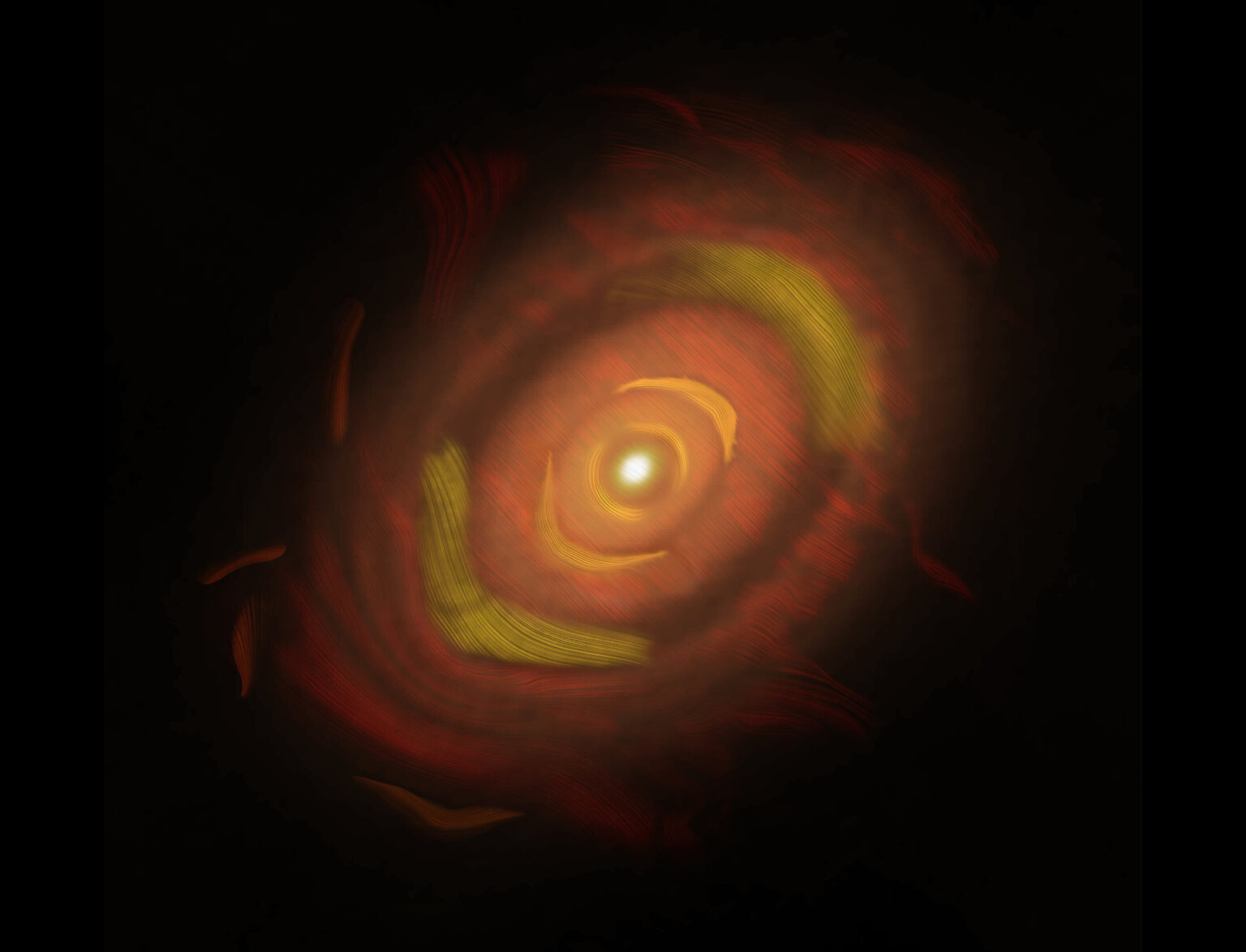They measured the polarization of radiation from the gas-dust disk surrounding this star. It turns out that the particles in it have a shape far from spherical and are even expanded in one direction.

Investigation of the gas-dust disk
Atacama Large Millimeter/submillimeter Array (ALMA) is one of the world’s largest radio telescopes located in the desert part of South America. One of its main tasks is to study how the birth of planetary systems occurs.
Recently, astronomers used it to observe the star HL Tauri. This young and bright star is located at a distance of 480 light-years from us, and it has been known for a long time that it is surrounded by a protoplanetary disk. It is quite possible that future planets are already being born somewhere in it, but this time scientists were interested in something else.
In past studies, astronomers noticed that the radiation that passed through the disk was polarized. This means that the oscillations of electromagnetic waves occur mainly in one plane. In turn, this indicates that the shape of the particles in the disk differs from the spherical one.
How do particles behave in a disk
The purpose of the new study, published on November 15, is to study the structural features of the dust disk. For this purpose, 10 times more polarization measurements and 100 times more measurements in general were carried out than in the study of any other gas-dust disk.
At the same time, the image of the gas-dust disk was obtained with a resolution of 5 AU. This is approximately equal to the distance from the Sun to Jupiter. In general, the study confirms that the particles in the disk are noticeably elongated.
The most interesting conclusion of the study concerns the fact that there are gaps in the disk that divide it into separate rings. It turns out that the polarization of radiation is especially strong precisely where there is little dust and not where there is a lot of it.
In addition, it turns out that the polarization in the gaps is very different depending on the direction, while in the rings it is more or less uniform. This indicates that in the gaps of the disk, the particles are not just elongated, but also aligned all in the same direction.
Scientists do not know what caused this, but they reject the idea that the magnetic field is responsible for this. Rather, the alignment of the grains occurred due to some mechanical process.
According to phys.org
Follow us on Twitter to get the most interesting space news in time
https://twitter.com/ust_magazine
